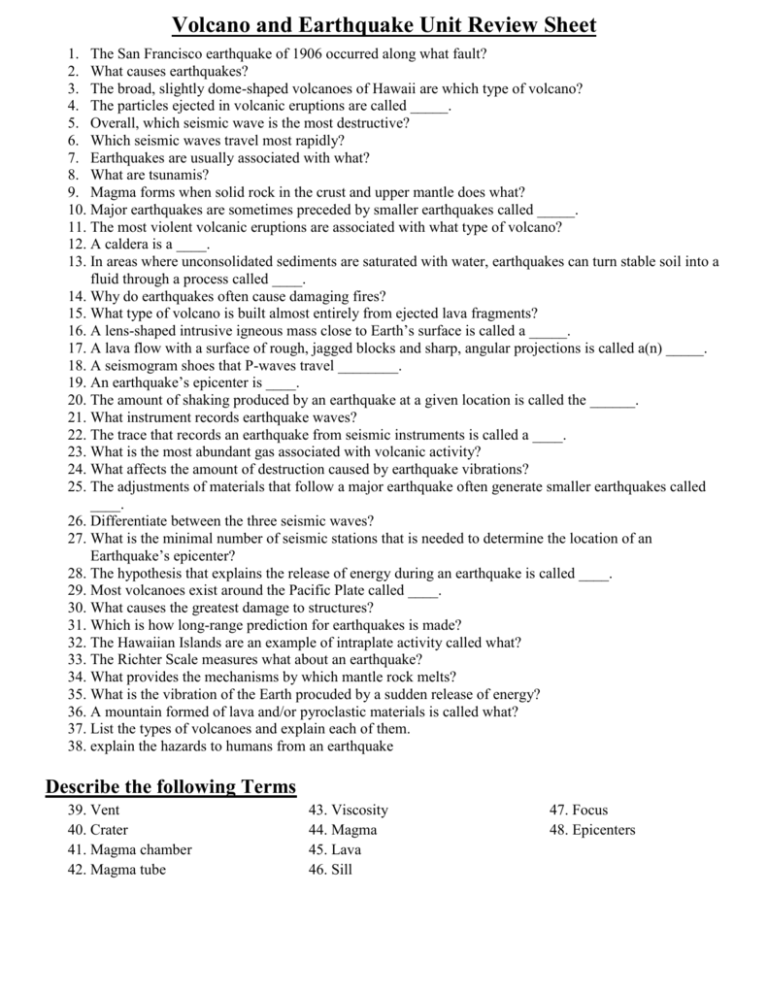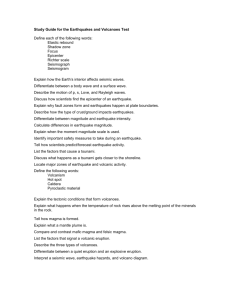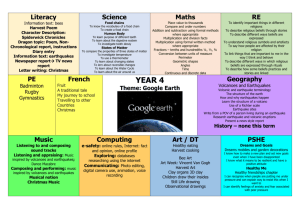Volcano and Earthquake Unit Review Sheet
advertisement

Volcano and Earthquake Unit Review Sheet 1. The San Francisco earthquake of 1906 occurred along what fault? 2. What causes earthquakes? 3. The broad, slightly dome-shaped volcanoes of Hawaii are which type of volcano? 4. The particles ejected in volcanic eruptions are called _____. 5. Overall, which seismic wave is the most destructive? 6. Which seismic waves travel most rapidly? 7. Earthquakes are usually associated with what? 8. What are tsunamis? 9. Magma forms when solid rock in the crust and upper mantle does what? 10. Major earthquakes are sometimes preceded by smaller earthquakes called _____. 11. The most violent volcanic eruptions are associated with what type of volcano? 12. A caldera is a ____. 13. In areas where unconsolidated sediments are saturated with water, earthquakes can turn stable soil into a fluid through a process called ____. 14. Why do earthquakes often cause damaging fires? 15. What type of volcano is built almost entirely from ejected lava fragments? 16. A lens-shaped intrusive igneous mass close to Earth’s surface is called a _____. 17. A lava flow with a surface of rough, jagged blocks and sharp, angular projections is called a(n) _____. 18. A seismogram shoes that P-waves travel ________. 19. An earthquake’s epicenter is ____. 20. The amount of shaking produced by an earthquake at a given location is called the ______. 21. What instrument records earthquake waves? 22. The trace that records an earthquake from seismic instruments is called a ____. 23. What is the most abundant gas associated with volcanic activity? 24. What affects the amount of destruction caused by earthquake vibrations? 25. The adjustments of materials that follow a major earthquake often generate smaller earthquakes called ____. 26. Differentiate between the three seismic waves? 27. What is the minimal number of seismic stations that is needed to determine the location of an Earthquake’s epicenter? 28. The hypothesis that explains the release of energy during an earthquake is called ____. 29. Most volcanoes exist around the Pacific Plate called ____. 30. What causes the greatest damage to structures? 31. Which is how long-range prediction for earthquakes is made? 32. The Hawaiian Islands are an example of intraplate activity called what? 33. The Richter Scale measures what about an earthquake? 34. What provides the mechanisms by which mantle rock melts? 35. What is the vibration of the Earth procuded by a sudden release of energy? 36. A mountain formed of lava and/or pyroclastic materials is called what? 37. List the types of volcanoes and explain each of them. 38. explain the hazards to humans from an earthquake Describe the following Terms 39. Vent 40. Crater 41. Magma chamber 42. Magma tube 43. Viscosity 44. Magma 45. Lava 46. Sill 47. Focus 48. Epicenters









